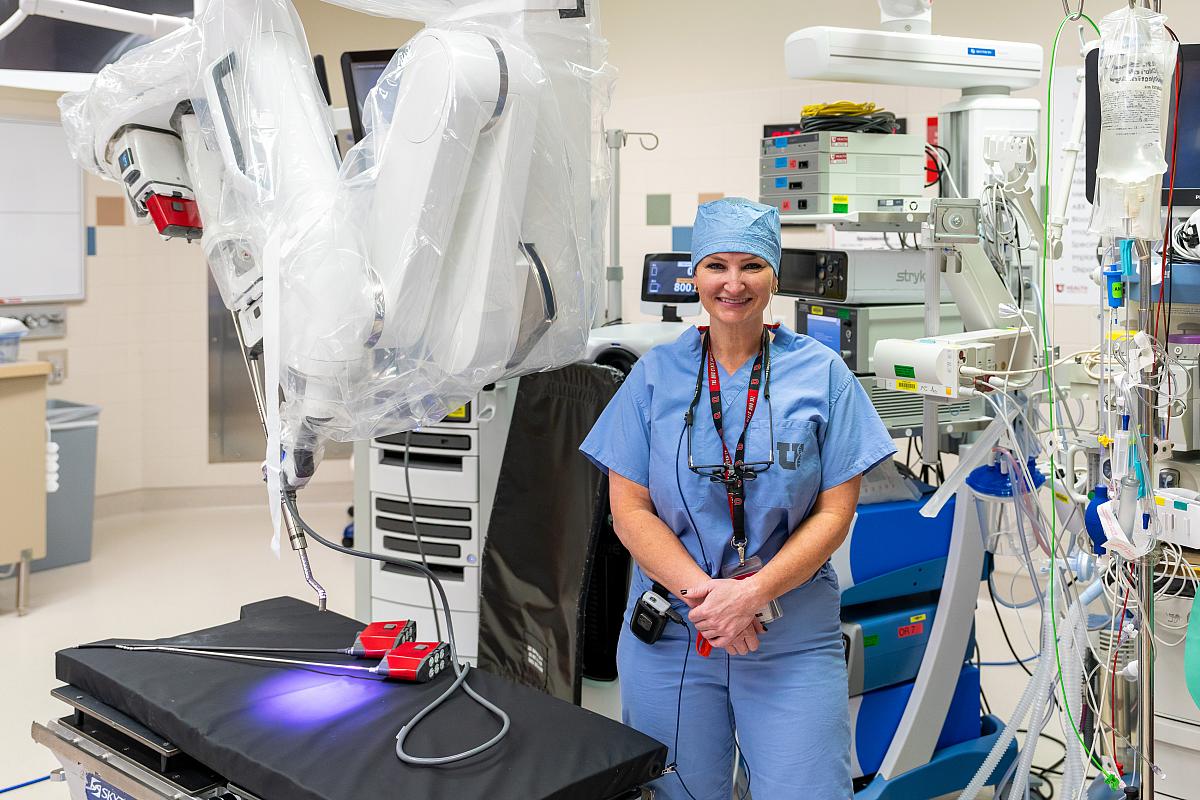
Huntsman Cancer Institute at the University of Utah (the U) proudly introduces the first and only single-port robot in the Mountain West for head and neck surgical oncology patients. This state-of-the-art technology is a groundbreaking step in the field of oncological surgery, allowing for greater precision and less invasive procedures. Under the visionary leadership of dedicated healthcare professionals, the institute is committed to revolutionizing treatments for cancer patients.
“I am delighted that Huntsman Cancer Institute can now offer cancer patients in the Mountain West access to this innovative and life-changing technology,” says Sachin Apte, MD, MS, MBA, chief clinical officer at Huntsman Cancer Institute, physician-in-chief of the cancer hospital, and professor of obstetrics and gynecology at the U. “While our surgeons have been conducting robotic cancer surgery for over a decade, the single-port robot represents a significant advancement that can substantially improve recovery time and minimize side-effects in select patients.”
The first person to have this procedure in the Mountain West will be 34-year-old Salt Lake City resident Reyes Salazar. The new robot will remove a non-cancerous cyst from the back of his throat. Doctors discovered a cyst near his airway when he was eight and despite successful laser removal, the cyst has reemerged. “If it were to roll over and block my air passage, I could suffocate in my sleep without even knowing,” remarks Salazar. “So, I prefer not to really take it lightly.”
Hilary McCrary, MD, MPH, head and neck surgical oncologist and microvascular reconstruction surgeon at Huntsman Cancer Institute and assistant professor of otolaryngology at the U, will be conducting the surgery. She first learned robotic surgery during residency, and received comprehensive training in the full spectrum of head and neck cancer care during her fellowship at Ohio State University.
“After all these years, my body has been through enough trauma from past operations,” Salazar says. “I can finally give my body the peace of mind and rest that it needs.” Despite his nerves about the upcoming procedure, Salazar remains overwhelmingly optimistic and holds high hopes for success, not only for himself but for others in similar situations.
Before the Food and Drug Administration (FDA) granted approval for the utilization of robots in head and neck surgeries, procedures that allowed access to the back of the throat required surgeons to split the mandible, or lower jawbone, to access areas that were otherwise inaccessible. McCrary envisions a bright, promising future for robotic surgery and believes that this technological leap forward will expand possibilities and increase the number of patients eligible for treatment.
The single-port robot is equipped with novel instrumentation and technology tailored to perform effectively within a narrow field. It incorporates a state-of-the-art camera with the capability to change shape, providing increased visibility around corners, which proves valuable when dealing with tumors in the base of the tongue or supraglottic region. This advanced method is becoming the national standard of care among head and neck practitioners, offering patients the potential for faster recovery, reduced scarring, and improved outcomes.
Huntsman Cancer Institute first opened its robotic surgery program in 2011 and remains one of the most advanced and comprehensive in the U.S. today. With 15 surgeons performing in a variety of specialized cancer procedures, they have completed over 5,000 robotic operations to date.
While head and neck cancers may develop for a variety reasons, the American Cancer Society (ACS) states that the human papillomavirus (HPV), makes up for most cancers found in the back of the throat and can be linked to other cancer types. Individuals are strongly encouraged to consider receiving the HPV vaccine as a preventative measure.


